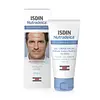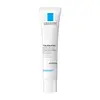What's inside
What's inside
 Key Ingredients
Key Ingredients

 Benefits
Benefits

 Concerns
Concerns

 Ingredients Side-by-side
Ingredients Side-by-side

Water
Skin ConditioningGlycerin
HumectantAcetamide Mea
HumectantIsodecyl Neopentanoate
EmollientCyclopentasiloxane
EmollientPentylene Glycol
Skin ConditioningCetyl Alcohol
EmollientCyclohexasiloxane
EmollientSclerotium Gum
Emulsion StabilisingZinc PCA
HumectantPiroctone Olamine
PreservativePolyacrylamide
Polymethyl Methacrylate
Butylene Glycol
HumectantStearyl Glycyrrhetinate
Skin ConditioningC13-14 Isoparaffin
EmollientGlyceryl Stearate
EmollientPEG-100 Stearate
Acrylates/C10-30 Alkyl Acrylate Crosspolymer
Emulsion StabilisingDimethicone/Vinyl Dimethicone Crosspolymer
Skin ConditioningSodium Hydroxide
BufferingLaureth-7
EmulsifyingBiosaccharide Gum-2
Skin ConditioningDisodium EDTA
Hydroxyphenyl Propamidobenzoic Acid
Skin ConditioningAscorbyl Palmitate
AntioxidantWater, Glycerin, Acetamide Mea, Isodecyl Neopentanoate, Cyclopentasiloxane, Pentylene Glycol, Cetyl Alcohol, Cyclohexasiloxane, Sclerotium Gum, Zinc PCA, Piroctone Olamine, Polyacrylamide, Polymethyl Methacrylate, Butylene Glycol, Stearyl Glycyrrhetinate, C13-14 Isoparaffin, Glyceryl Stearate, PEG-100 Stearate, Acrylates/C10-30 Alkyl Acrylate Crosspolymer, Dimethicone/Vinyl Dimethicone Crosspolymer, Sodium Hydroxide, Laureth-7, Biosaccharide Gum-2, Disodium EDTA, Hydroxyphenyl Propamidobenzoic Acid, Ascorbyl Palmitate
Water
Skin ConditioningIsononyl Isononanoate
EmollientGlycerin
HumectantDimethicone
EmollientAmmonium Polyacryloyldimethyl Taurate
Emulsion StabilisingMyristyl Myristate
EmollientStearic Acid
CleansingPotassium Cetyl Phosphate
EmulsifyingZinc PCA
HumectantGlyceryl Stearate Se
EmulsifyingSodium Hydroxide
BufferingMyristic Acid
CleansingPalmitic Acid
EmollientDisodium EDTA
Capryloyl Glycine
CleansingVitreoscilla Ferment
Skin ConditioningCitric Acid
BufferingXanthan Gum
EmulsifyingSodium Benzoate
MaskingPhenoxyethanol
PreservativePiroctone Olamine
PreservativeParfum
MaskingWater, Isononyl Isononanoate, Glycerin, Dimethicone, Ammonium Polyacryloyldimethyl Taurate, Myristyl Myristate, Stearic Acid, Potassium Cetyl Phosphate, Zinc PCA, Glyceryl Stearate Se, Sodium Hydroxide, Myristic Acid, Palmitic Acid, Disodium EDTA, Capryloyl Glycine, Vitreoscilla Ferment, Citric Acid, Xanthan Gum, Sodium Benzoate, Phenoxyethanol, Piroctone Olamine, Parfum
 Reviews
Reviews

Ingredients Explained
These ingredients are found in both products.
Ingredients higher up in an ingredient list are typically present in a larger amount.
Disodium EDTA plays a role in making products more stable by aiding other preservatives.
It is a chelating agent, meaning it neutralizes metal ions that may be found in a product.
Disodium EDTA is a salt of edetic acid and is found to be safe in cosmetic ingredients.
Learn more about Disodium EDTAGlycerin is already naturally found in your skin. It helps moisturize and protect your skin.
A study from 2016 found glycerin to be more effective as a humectant than AHAs and hyaluronic acid.
As a humectant, it helps the skin stay hydrated by pulling moisture to your skin. The low molecular weight of glycerin allows it to pull moisture into the deeper layers of your skin.
Hydrated skin improves your skin barrier; Your skin barrier helps protect against irritants and bacteria.
Glycerin has also been found to have antimicrobial and antiviral properties. Due to these properties, glycerin is often used in wound and burn treatments.
In cosmetics, glycerin is usually derived from plants such as soybean or palm. However, it can also be sourced from animals, such as tallow or animal fat.
This ingredient is organic, colorless, odorless, and non-toxic.
Glycerin is the name for this ingredient in American English. British English uses Glycerol/Glycerine.
Learn more about GlycerinPiroctone Olamine is used to treat fungal infections and often found in anti-dandruff shampoo.
This ingredient is particularly effective against Malassezia, the root cause of dandruff.
Piroctone olamine is water-soluble.
Learn more about Piroctone OlamineSodium Hydroxide is also known as lye or caustic soda. It is used to adjust the pH of products; many ingredients require a specific pH to be effective.
In small amounts, sodium hydroxide is considered safe to use. However, large amounts may cause chemical burns due to its high alkaline.
Your skin has a natural pH and acid mantle. This acid mantle helps prevent harmful bacteria from breaking through. The acid mantle also helps keep your skin hydrated.
"Alkaline" refers to a high pH level. A low pH level would be considered acidic.
Learn more about Sodium HydroxideWater. It's the most common cosmetic ingredient of all. You'll usually see it at the top of ingredient lists, meaning that it makes up the largest part of the product.
So why is it so popular? Water most often acts as a solvent - this means that it helps dissolve other ingredients into the formulation.
You'll also recognize water as that liquid we all need to stay alive. If you see this, drink a glass of water. Stay hydrated!
Learn more about WaterZinc PCA (or "zinc salt") differs slightly from zinc itself. PCA stands for pyrrolidone carboxylic acid. However, Zinc PCA comes from zinc.
It can help reduce redness, regulate sebum, and promote the general healing process of the skin.
Zinc PCA tends to be especially useful for those with oily, acne-prone skin. It's certainly an ingredient worth trying out!
Learn more about Zinc PCA